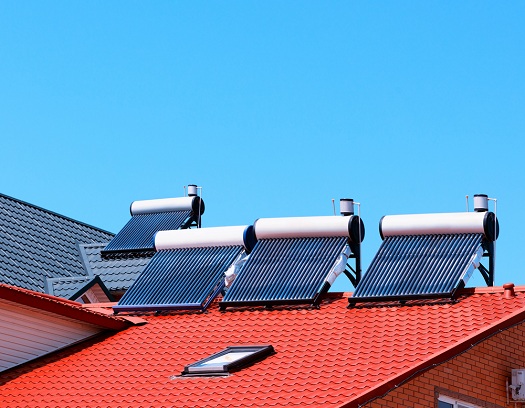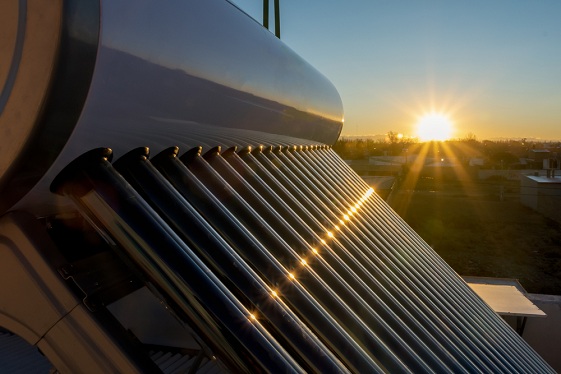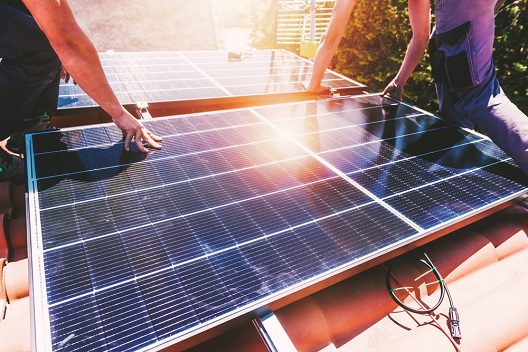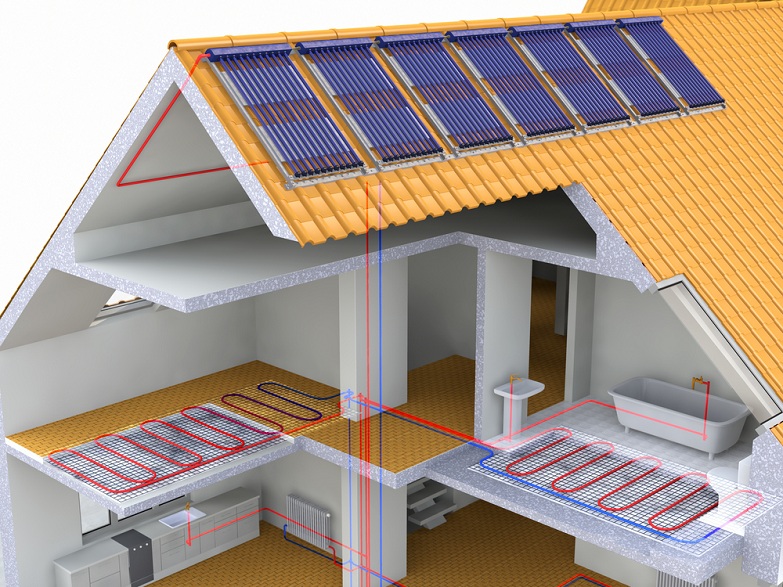If your new home were designed to be completely powered by solar energy, it would probably work like the example shown above. Letting sunlight into your house provides warmth to your floors and air.
You can use solar power in several different ways besides simply using solar panel systems. Photovoltaic solar panels convert sunlight directly into electrical power. However, there are other ways to use solar energy.
While solar panels are by far the most common way to generate electricity for use at home, the lesser-known but equally effective technique of solar heating should not be ignored.
Solar heaters aren't anything new; we've been using them for thousands of years. For example, the ancient Greeks built sun rooms to keep indoor areas warm by efficiently capturing and storing solar energy.
Nearly one-in-three U.S. households struggle with keeping up with their energy bills. Households can benefit from researching the various methods of using solar heating systems to heat their homes and dramatically cut down on those high energy costs.
Of course, homeowners may need government subsidies to pay for upgrades. Sometimes upgrading your heating system isn't an affordable solution if the cost of your current system is already high. If you can upgrade your system, solar energy heaters are one of the best options available.
This complete solar heating systems guide will be very useful if you don't know which solar heating systems are available.
Active and Passive Solar Heating Systems

There are two ways to heat your house using solar energy: Active solar heating and Passive solar heating.
Passive solar heating
Passive solar heating uses ample sunlight to heat your home during the cold months. With this approach, the house’s walls, windows, and flooring must be carefully designed to absorb sunlight during the day and slowly release it into each room.
Passive solar heating collects solar energy and transfers it throughout the building without any mechanism. It mainly entails:
Active solar heating
Active solar heating systems require mechanical equipment such as pumps, collectors, and storage tanks to transfer heat from outside into the interior space.
Active solar heater systems collect heat from sunlight using flat-panel photovoltaic modules. Air and liquid inside a pipe are heated when they come into contact with the collector.
This heat is either pumped into the interior room by a heating unit or a ventilation device or stored inside a storage tank.
Solar heating systems can help you save money by avoiding the high electric bills that come from using traditional heaters. Natural sunlight can be an effective and cost-savvy alternative to conventional fossil fuels for heating homes.
Differences Between Active and Passive Solar Heating
Passive heating systems cannot be used in existing houses, so they're only relevant for people building a new house. On the contrary, active Heaters can be installed in houses with traditional heaters.
For most people, using an active solar heater is better than passive solar heating.
Various Methods to Use Active Solar Heating in Homes?

When looking at different solar heating systems, there are two main types: solar air space heaters and solar water heaters or hydronic systems.
1. Solar air space heaters
Active solar space heaters use sunlight to heat the interior of your building directly. A rooftop or wall-mountable air heater draws cool air from outside through a solar collector, which heats it before blowing it inside. Warm air is then circulated into the room.
Roof-mounted heating systems move warm air through the house using air ducts. For wall-mounted room heaters placed on south-facing walls, openings are cut through the wall, so that warm air from the heater transfers into the room.
2. Solar water heaters
In solar water heaters, a solar collector absorbs solar energy and converts it into heat. A non-hazardous glycol antifreeze or water flows through the collector panels, and the collected solar thermal power heats the fluid.
As the fluid quickly flows through the solar panel, its temperature rises between 10° and 20°F (5.6°–11°C). After the warm fluid flows through the heater, it goes into a heat exchanger or a tank to store hot liquid.
There are three main categories of water-based solar heaters: hot-water baseboard heaters, radiant floor systems, and central forced air units. Let's see how they function:
A) Hot-water baseboards
Baseboard heaters are installed near the floor or usually at a point close to it. It lets the heat spread evenly through the room without worrying about hot spots.
A system of pipes under the floor transfers the warmth from the water through the baseboards into the room.
To warm up a room effectively, hot-water baseboards need a water temperature between 71° and 82°C. Flat plate collectors can raise the temperatures of liquids to 120 °F(49°C). However, if you want to raise the temperatures of the liquids even further, then you need to use an additional method called a backup heater.
B) Radiant floor systems
Radiant floor heating systems use hot water or steam to heat floors. The heated liquid flows through a network of tubes set into a thin layer of concrete. The heated liquid from the pipes then heats each room.
With radiant floor heating, there are several things to keep in mind.
Radiant heating takes longer to warm up a room than other types of heating. Once installed, these systems provide constant heat throughout the house.
C) Central forced-air systems
A liquid-heated water heater converts itself into an effective forced-heat source by installing a heat exchange tube within its return vent.
When air enters the duct through an opening, solar-heated water heats it in the heat exchanger before entering the room. A furnace supplies the additional heat if needed.
The heating coil must be large enough to provide sufficient thermal energy to the room, even when the heater runs at its lowest setting. Central heating systems work efficiently using liquid solar thermal energy.
Do solar heaters work well for your home?

There are several points to prove why you might want to consider installing an active and/or passive solar space heater system in your home.
Most homes in the U.S. use electricity generated from burning fossil fuel, so if adding a passive or active solar heater doesn't make sense for your house, practicing energy conservation can be helpful.
Solar energy can be used to heat your house and save you money every time. You can use our free solar calculator to determine how many solar cells your house needs to generate enough energy for your entire household.


